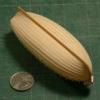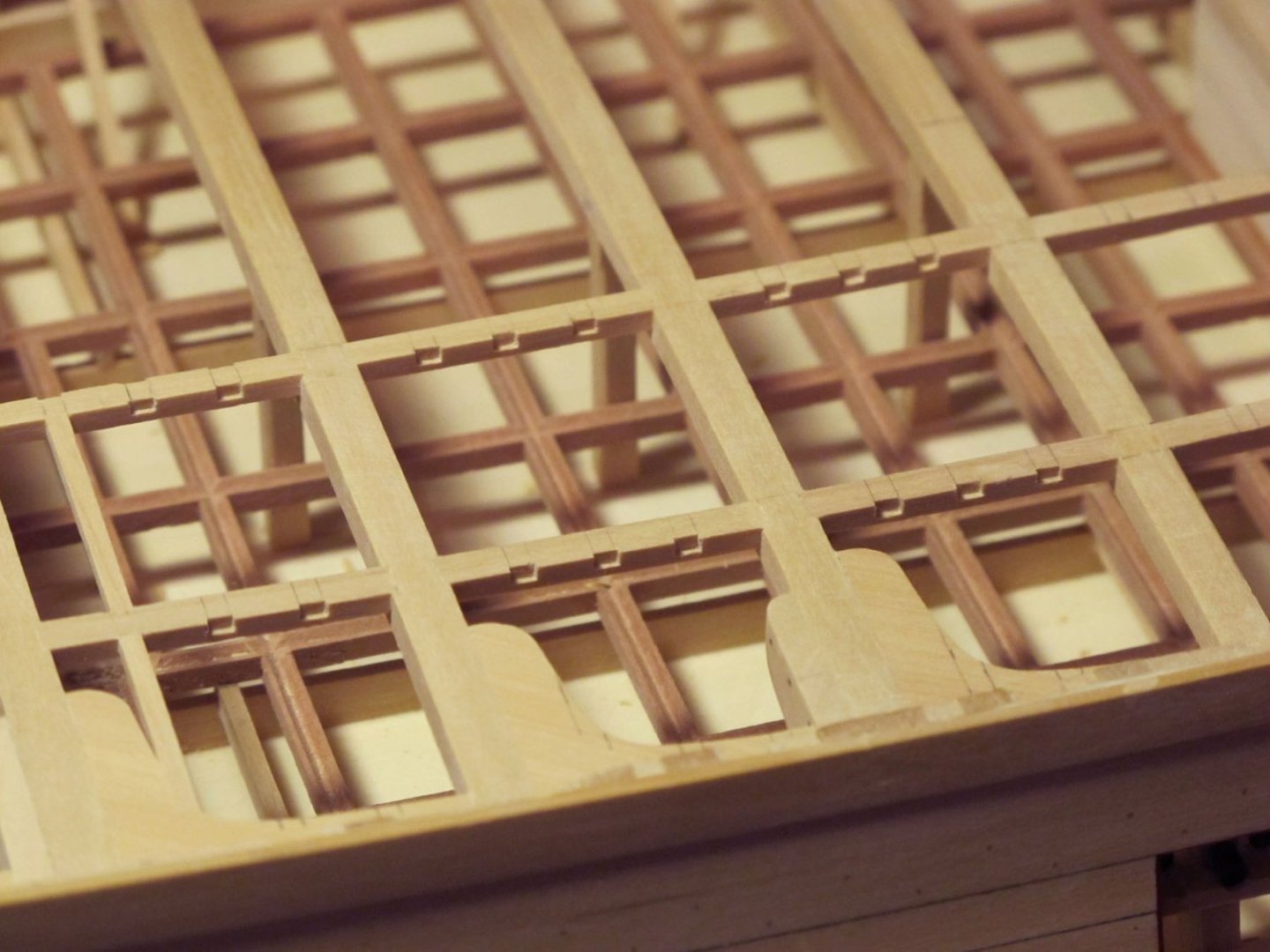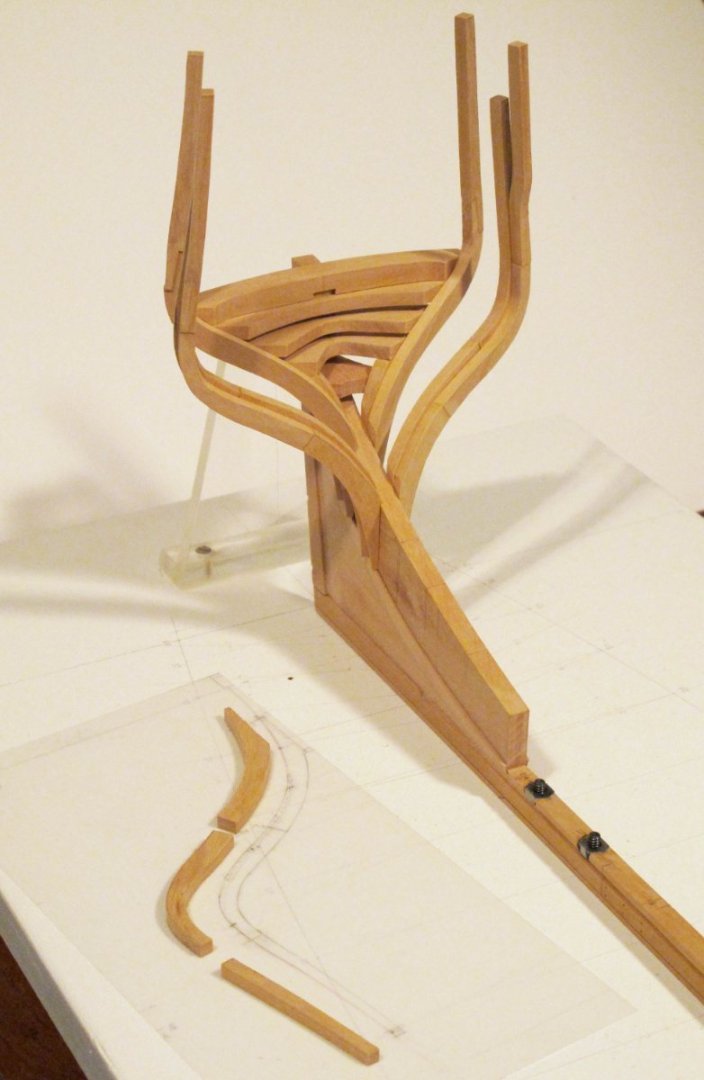-
Posts
13,167 -
Joined
-
Last visited
Content Type
Profiles
Forums
Gallery
Events
Everything posted by druxey
-
Those open rails were perfect for securing lines around.
-
Looking better and better. You might want to fill and sand the transom ends of the planks until you have a nice flush surface as well.
- 88 replies
-
- Muscongus Bay Lobster Smack
- Finished
-
(and 1 more)
Tagged with:
-
When I wrote earlier 'from the keel up' I did not mean that the keel itself was covered first; just the hull planking. Those plates were put on next to last, with a small flange over the keel/garboard to overlap the first row of hull plating. The very last was under the keel itself, with another overlap to the side keel plates.
-
You need a marked out building board so that you can drop perpendiculars from the frame (or whatever) to the plan on the baseboard. I don't think there is any other way to get the frames placed exactly and symmetrically. You can see the maximum breadth line on the baseboard in the photo below.
- 91 replies
-
- ancre
- La Mahonesa
-
(and 1 more)
Tagged with:
-

How to "unstick" this chuck from the mill spindle?
druxey replied to rlb's topic in Modeling tools and Workshop Equipment
And now, a really good clean up, I think. -
Welcome aboard and thanks for introducing yourself, Mark.
-
A very nice trio indeed! Well done, Eric.
- 62 replies
-
- Muscongus Bay Lobster Smack
- Model Shipways
-
(and 1 more)
Tagged with:
-

How to "unstick" this chuck from the mill spindle?
druxey replied to rlb's topic in Modeling tools and Workshop Equipment
Please use a soft-headed hammer for the purpose! -
Nice pissdales, Siggi. But I thought that they were a bit smaller than yours. Do you have a reference for their size?
-

Bugatti Type 35b by kpnuts - Italeri - 1/12
druxey replied to kpnuts's topic in Non-ship/categorised builds
Love the dirty, oily finish! I can almost smell it..... -
A very nice job on the dory, Shepherd! Well done.
- 13 replies
-
- Lowell Grand Banks Dory
- Model Shipways
-
(and 1 more)
Tagged with:
About us
Modelshipworld - Advancing Ship Modeling through Research
SSL Secured
Your security is important for us so this Website is SSL-Secured
NRG Mailing Address
Nautical Research Guild
237 South Lincoln Street
Westmont IL, 60559-1917
Model Ship World ® and the MSW logo are Registered Trademarks, and belong to the Nautical Research Guild (United States Patent and Trademark Office: No. 6,929,264 & No. 6,929,274, registered Dec. 20, 2022)
Helpful Links
About the NRG
If you enjoy building ship models that are historically accurate as well as beautiful, then The Nautical Research Guild (NRG) is just right for you.
The Guild is a non-profit educational organization whose mission is to “Advance Ship Modeling Through Research”. We provide support to our members in their efforts to raise the quality of their model ships.
The Nautical Research Guild has published our world-renowned quarterly magazine, The Nautical Research Journal, since 1955. The pages of the Journal are full of articles by accomplished ship modelers who show you how they create those exquisite details on their models, and by maritime historians who show you the correct details to build. The Journal is available in both print and digital editions. Go to the NRG web site (www.thenrg.org) to download a complimentary digital copy of the Journal. The NRG also publishes plan sets, books and compilations of back issues of the Journal and the former Ships in Scale and Model Ship Builder magazines.






